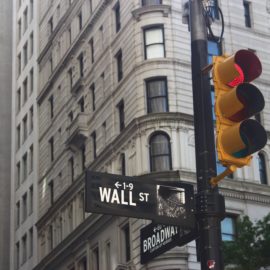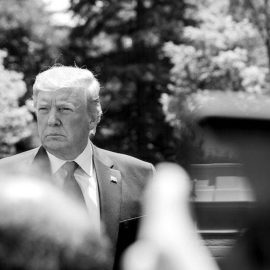
How much money went missing from FTX? Has the mystery been solved?
In Going Infinite, financial journalist Michael Lewis provides a rare glimpse into the inner workings of Sam Bankman-Fried’s astounding rise and fall. Lewis shares what’s known about billions of dollars that went missing, including what Bankman-Fried told him about it.
Read more to learn about the mysterious case of FTX’s missing money.
FTX’s Missing Money
When FTX customers started withdrawing their assets, many of them ran into a brick wall. Lewis shares the story of FTX’s missing money in the context of the company’s collapse.
Because FTT (FTX’s own cryptocurrency that functioned as equity in FTX) functioned as stock in FTX, its sharp drop in value led FTX users to withdraw money from FTX in droves. According to Lewis, on the night of Sunday, November 6, 2022, FTX users were withdrawing $100 million from FTX per hour, totaling $2 billion over the course of the day. Then, on Monday, November 7, FTX users tried to withdraw another $4 billion. Lewis relates that, by Tuesday morning, FTX had already issued $5 billion in withdrawals, with several billion more dollars in “pending” withdrawals.
But, Lewis points out that withdrawals shouldn’t have caused a catastrophe. Though they cut into FTX’s short-term trading volume, that should have been short-lived once customers realized FTX was stable and redeposited their money. In reality, the opposite occurred: After processing $5 billion in withdrawals, FTX ceased allowing withdrawals because it lacked the money to pay the remaining $8.8 billion customers were asking for. In other words, customers who had collectively deposited a total of nearly $9 billion at FTX were told their money was gone.
As Lewis relates, it became obvious that FTX lacked the money to process further withdrawals by Tuesday, when it simply stopped processing further withdrawal requests. One week afterward, FTX’s employees had overwhelmingly fled its Bahamas headquarters, fearing legal retribution from Bahamas authorities. However, Lewis notes that FTX’s Chief Operating Officer, Constance Wang, stayed in the Bahamas with one goal—to find what happened to the missing $8.8 billion so that she could act as a witness in the case against Bankman-Fried.
(Shortform note: Although Lewis writes that Wang agreed to serve as a witness for the US Department of Justice’s case against Bankman-Fried, other experts point out that Wang appeared on the possible witness list for the prosecution and the defense. Consequently, it’s unclear which side she will testify for, if she’s called to the witness stand at all.)
Lewis says that Wang found a tentative answer when scouring financial documents for Alameda Research (which shared the same headquarters as FTX). According to these documents, over $8.8 billion was listed under Alameda Research’s liabilities as “customer deposits,” even though, as a private trading firm, it shouldn’t have had any customer deposits. In other words, the documents suggested that FTX had been using customer deposits in Bankman-Fried’s private trading fund for Alameda Research. But, puzzlingly, the same documents showed only $3 billion in liquid assets for Alameda Research, meaning $6 billion remained unaccounted for. Hence, these documents just produced another question: What happened to that $6 billion?
(Shortform note: Lewis doesn’t clarify that FTX’s act of sending customer funds to another company without customer consent is generally considered illegal, according to experts. Moreover, financial regulations require trading platforms like FTX to have at least as much money available as its customers have deposited, so FTX also violated these regulations.)
Bankman-Fried’s Partial Explanation of the Missing $6 Billion
Lewis notes that, in Bankman-Fried’s conversations with Wang, Bankman-Fried provided a plausible explanation as to why FTX’s customer deposits were stored in Alameda’s trading fund. According to Bankman-Fried, FTX had been unable to acquire a legitimate bank account because traditional banks were wary of cryptocurrency. Thus, FTX had nowhere to store its customer deposits. So, he decided to use Alameda as a functional bank for FTX’s deposits with the caveat that the money was supposed to go untouched within Alameda.
But, Lewis points out that, although this explanation answers why FTX’s customer deposits were stored in Alameda, it doesn’t answer where the missing $6 billion went. Eventually, Bankman-Fried told Lewis a small part of the story. In 2021, FTX had lost $1 billion to hackers and decided to keep quiet about it to discourage further hacks. Still, that left $5 billion unaccounted for, with no plausible explanation. Bankman-Fried flatly denied that Alameda Research had lost the $5 billion with risky investments, and Lewis notes that such massive losses in an elite quantitative trading firm would be unheard of. So, Lewis suggests, the question of the missing $5 billion seemed like an unsolvable mystery.
| The Prosecution’s Account of the Missing Billions Lewis doesn’t discuss the account offered by Bankman-Fried’s prosecutors, who opt for a straightforward story: Bankman-Fried stole billions of dollars from FTX’s customers, using those funds to grow his personal wealth and funnel money toward his preferred causes, such as political campaigns and new cryptocurrencies. The prosecutors argue that Bankman-Fried knowingly and intentionally committed fraud and attempted to silence FTX employees who raised concerns, as shown by his decision to fire Julie Schoening, the head of an FTX subsidiary who discovered the code that allowed Alameda Research to borrow from FTX. Bankman-Fried’s defense, however, paints a different picture. They argue that, rather than a criminal mastermind, Bankman-Fried was more of an incompetent executive who made serious mistakes but did so in good faith. Thus, they contend that Bankman-Fried cannot be guilty of fraud, since a fraud conviction requires demonstrable intent to defraud victims. |
John Ray’s Investigation
After Bankman-Fried declared bankruptcy, FTX’s lawyers from Sullivan & Cromwell appointed John Ray as interim CEO of FTX. Ray’s task, Lewis relates, was to find as much of FTX’s missing funds as possible to return to its creditors. And, according to Lewis, Ray managed to find significant portions of the missing funds even though he lacked experience with cryptocurrencies. For example, Ray found the billion dollars stolen by a rogue hacker in Mauritius, and by his own report, he recovered a total of $7 billion by June 2023. In light of Ray’s success, Lewis concludes that the money might not be missing after all.
(Shortform note: It’s unclear how, according to Lewis, Ray has already recovered $7 billion (with several billion more on the way) given that FTX was only $6 billion in the hole by Lewis’s own account—if so, then Ray has actually found additional money beyond what FTX was missing. However, one possible explanation that Lewis doesn’t explore is that FTX’s accounting data was so muddled that it’s difficult to determine exactly how much was missing in the first place.)






